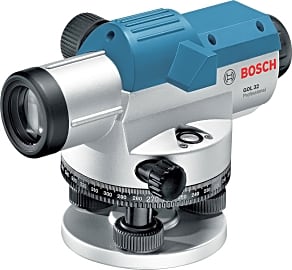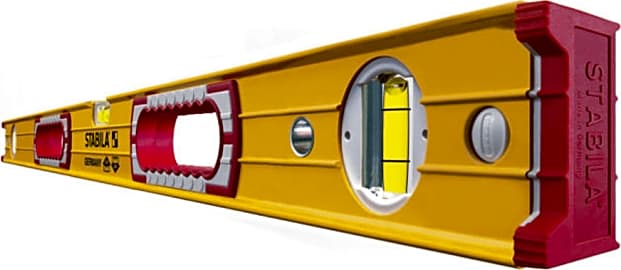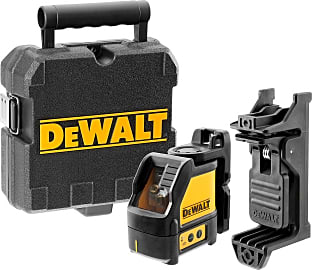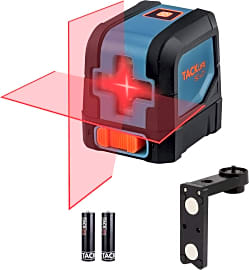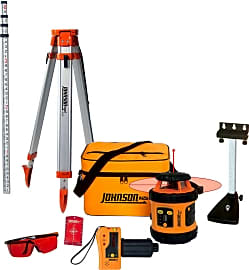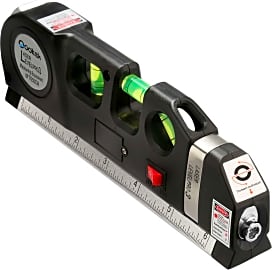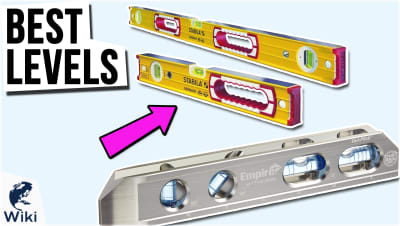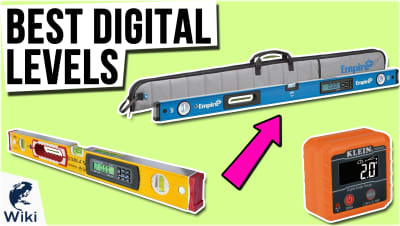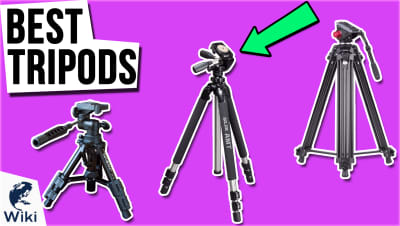The 10 Best Builder's Levels

This wiki has been updated 38 times since it was first published in July of 2015. When a professional carpenter, mason, or home handyperson wants to be sure things are strictly on the level, there is no room for guesswork. Even small inaccuracies can snowball into very expensive fixes down the line, so whether you're looking for a basic bubble model, an optical sight tool, or a high-tech rotary machine, you'll find a variety of quality options here. When users buy our independently chosen editorial recommendations, we may earn commissions to help fund the Wiki.
Editor's Notes
April 21, 2021:
A year later, we found this list to still be in great shape, and couldn’t bring ourselves to part with any of our existing rankings on the page, so we decided to move through this round of updates without making any major changes. There were, of course, several selections that we considered incorporating – most notably, some nifty looking laser options from respected brands like Huepar and Leica – but ultimately decided that the last editor for this page had done a good job of putting together a comprehensive list that showcased several excellent options in a few different styles, and saw no need to go messing with that.
If you’re in the market for handheld model, you might find that you have better luck with our standard list of levels. Or, for laser applications that require less range, you may want to consult our list of line lasers. If eyeballing those bubbles just isn’t your thing, then give some thought to our rankings for digital levels.
March 04, 2020:
We replaced the Johnson 40-6912 because its stability issues made it redundant compared to our two other sightline-style levels, the superior DeWalt DW090PK, and NWI Package. In its place, we added a rotary-style option, the Topcon RL-H5A, a high-end level for serious builders. Its reliable, top-of-the-line technology and durability make it a great choice for someone who has a lot of time and money riding on the accuracy of their equipment. Its price tag is high, but nothing compared to the cost of replacing off-pitch walls or structures caused by cheaper, inaccurate equipment.
We also added the Tacklife SC-L01, a great little cross-line level at a low price. It uses a red laser so it's only suited for indoor use, and tops out at about 30 feet, but if that's all you need it for, its a great choice. The great thing about lightweight laser levels like this is that as long as they have a magnetic base, they should be able to attach to pretty much any drywall corner. This is a strip of metal, called a “bead”, runs the length of the corner, allowing a lightweight object to be magnetically attached.
Special Honors
Engineer Supply Picking out a new level can be a daunting task. As is obvious from the small sample of tools featured on this list alone, it's an expansive category containing many different styles of device. However, if you've already narrowed down your purchase decision to the point of knowing roughly what type of tool you're looking for, this website is a decent place to go from there. They offer a wide variety of models organized into 18 groups, which should help eliminate a lot of options for you. engineersupply.com
Keeping Everything Properly Aligned
It is also useful for transferring, setting, and measuring horizontal levels.
When it comes to professional carpentry, construction, or DIY projects around the house, absolute accuracy and precision are integral to getting the job done right. Wouldn't it be great to give your hands the freedom to hammer nails, hang wallpaper, or build that chair rail or outdoor deck without having to worry about eyeballing the proper alignment of the materials with which you're working? The good news is that the solution to these problems can be found in the use of a builder's level.
The builder's level is an optical instrument typically used in surveying and building applications for the purpose of creating reference points that allow a worker to check elevations. It is also useful for transferring, setting, and measuring horizontal levels. In many cases, this tool is attached to a tripod and maintained at a horizontal orientation by use of footscrews.
Common parts to a conventional builder's level include a telescope, which holds the lenses that magnify objects; a graduated leveling vial, responsible for optimizing the telescope's horizontal orientation; a graduated horizontal circle, marked with degrees and used for setting and reading angles; leveling screws, used to keep the instrument horizontally balanced; a focusing knob, to make distant objects as clear as possible; a base, on which the leveling instrument is placed; an eyepiece at the end of the telescope that turns, bringing the telescope's cross hairs into focus; and a vernier scale, which moves when the telescope is shifted to the left or right.
Many of the options on our list leverage cutting-edge laser technology to ensure precision while on the job. Laser levels project a steady beam of red or green light along a horizontal or vertical axis. These devices offer the versatility and accuracy needed to function both indoors and outdoors across a range of distances. For outdoor projects, such applications include surveying; checking posts and beams when building decks, fences, or porches; and confirming land elevations. With regard to indoor applications, laser levels also serve quite useful when leveling floors, building chair rails, aligning cabinets or shelving, and checking the heights of doors and windows.
Three types of laser levels include the dot laser level, line level, and the rotary laser level. Designed for use as a reference point, the dot laser level produces one or many reference dots on a wall or work surface. The line level emits a single continuous beam of light along a wall, making it ideal for smaller indoor projects. The rotary level laser produces a single beam in a 360-degree circular fashion around an entire room. Rotary level lasers are the largest of the three types and are mounted to a surveying tripod for stability. When using a rotary level laser outdoors, an electronic laser receiver is needed, as even the brightest visible rotating beam will be lost in broad daylight. The laser receiver usually produces a short beeping sound when a worker is close to being on level, followed by a steady, solid beep when actually at level. Most laser receivers are compatible with only one colored beam (i.e. red or green), depending on the device used.
Getting On The Level
Understanding the environment and nature of your project will determine the best type of builder's level to choose. For example, while you could use an ordinary tape measure to install a chair rail in all four corners of your bedroom, a dot laser level can mitigate the process of having to make individual marks on the walls, thanks to its placement atop a tripod and ability to shine multiple reference points. This will also make the job go a lot faster and minimize the amount of manpower required to make accurate measurements.
Next, consider whether you plan to use the device indoors or outdoors.
Next, consider whether you plan to use the device indoors or outdoors. If you plan on the latter, a green laser beam will be easier to see when working in direct sunlight. Outdoor leveling projects necessitate greater strength and visibility of the laser beams used along with an ability to verify a beam's path in addition to its end point. This becomes particularly important when completing construction projects on a large scale and dealing with greater distances between objects (e.g. more than 200 feet). For that reason, the visibility range of the device should be taken into account.
Consider an option that is equipped with a powerful lithium ion battery, so you can ensure extended operating time for your level.
Finally, if you want to maximize functionality, then a device capable of both manual and automatic leveling will come in handy, particularly when working at large construction sites.
A Brief History Of The Builder's Level
The concept of the leveling tool dates back to ancient Egyptian times and the construction of the pyramids. Two problems facing the Egyptians included how to level a coarse stone horizontally in order to make room for another stone on top of it, as well as plumbing the side wall of a stone to fit appropriately next to another. The solution for this type of measurement was a square-level, fashioned from wood.
However, it lacked the sensitivity of the conventional level.
The spirit, or bubble, level, a sealed glass tube containing alcohol and an air bubble, was invented in 1661 by French scientist Melchisédech Thévenot. This device was first used on telescopes and later on surveying instruments, but it did not become a carpenter’s tool until the mid-19th century. The circular level, in which a bubble floated under a circular glass to indicate level in all directions, was invented in 1777. However, it lacked the sensitivity of the conventional level.
The earliest patent for the first laser level appeared in the mid-1970s, followed by the line laser level in the 1980s with more compact devices developed by the 1990s. Early laser levels were limited to indoor use due to the limited range and strength of their light beams. Thanks to the addition of integrated laser receivers, today's rotary laser levels are powerful enough for indoor and outdoor use.



